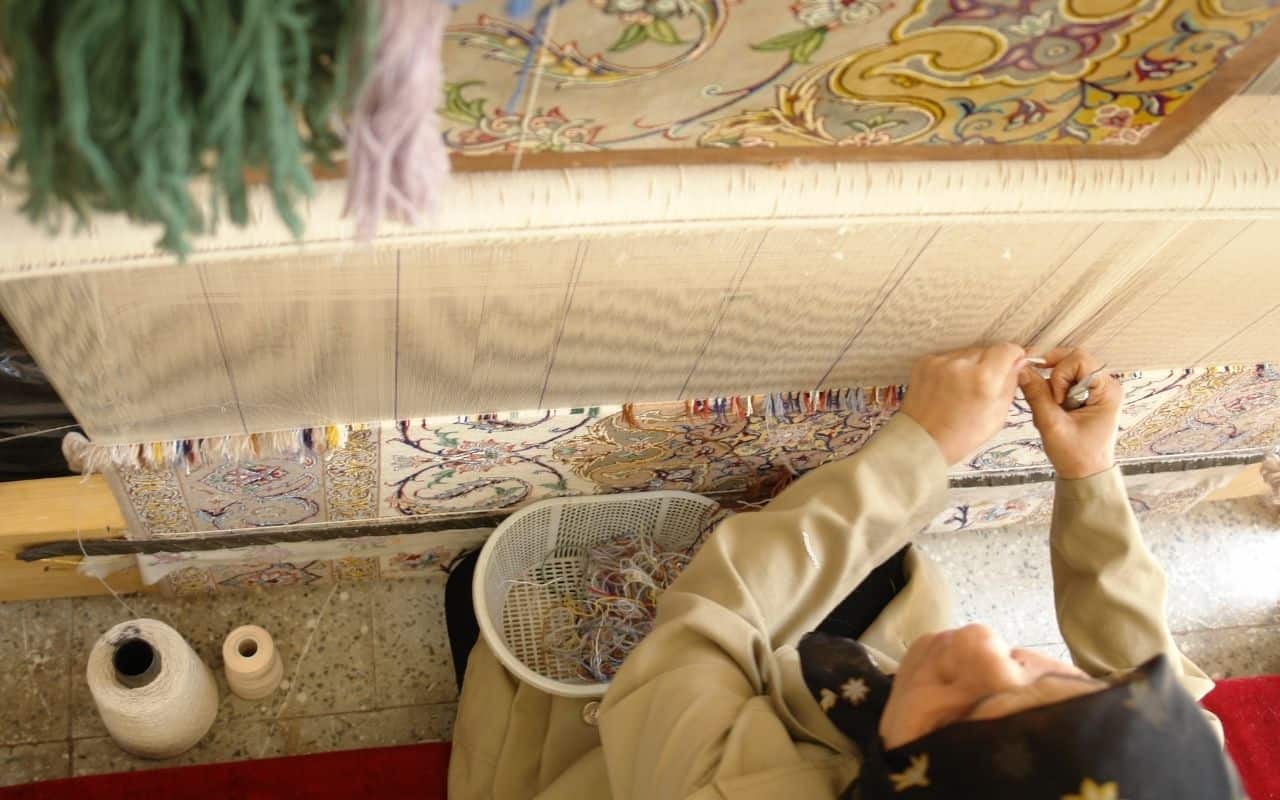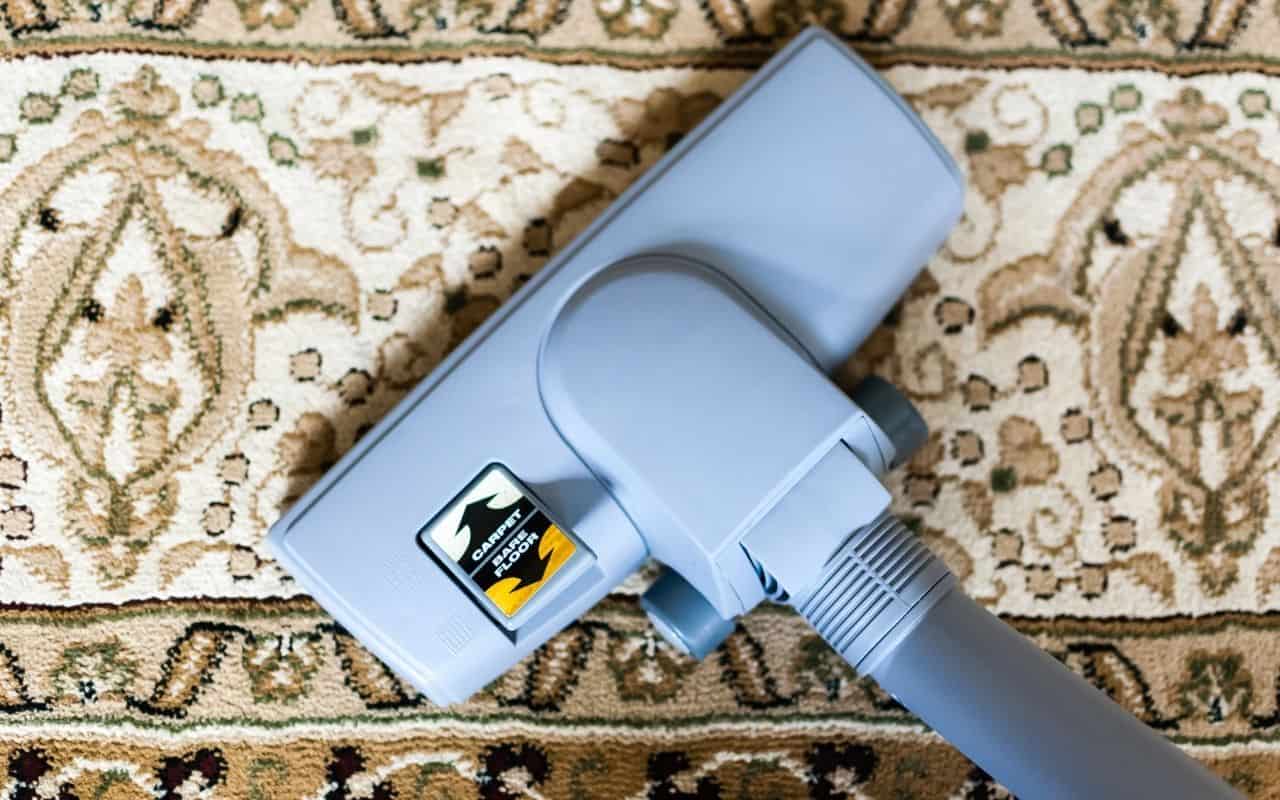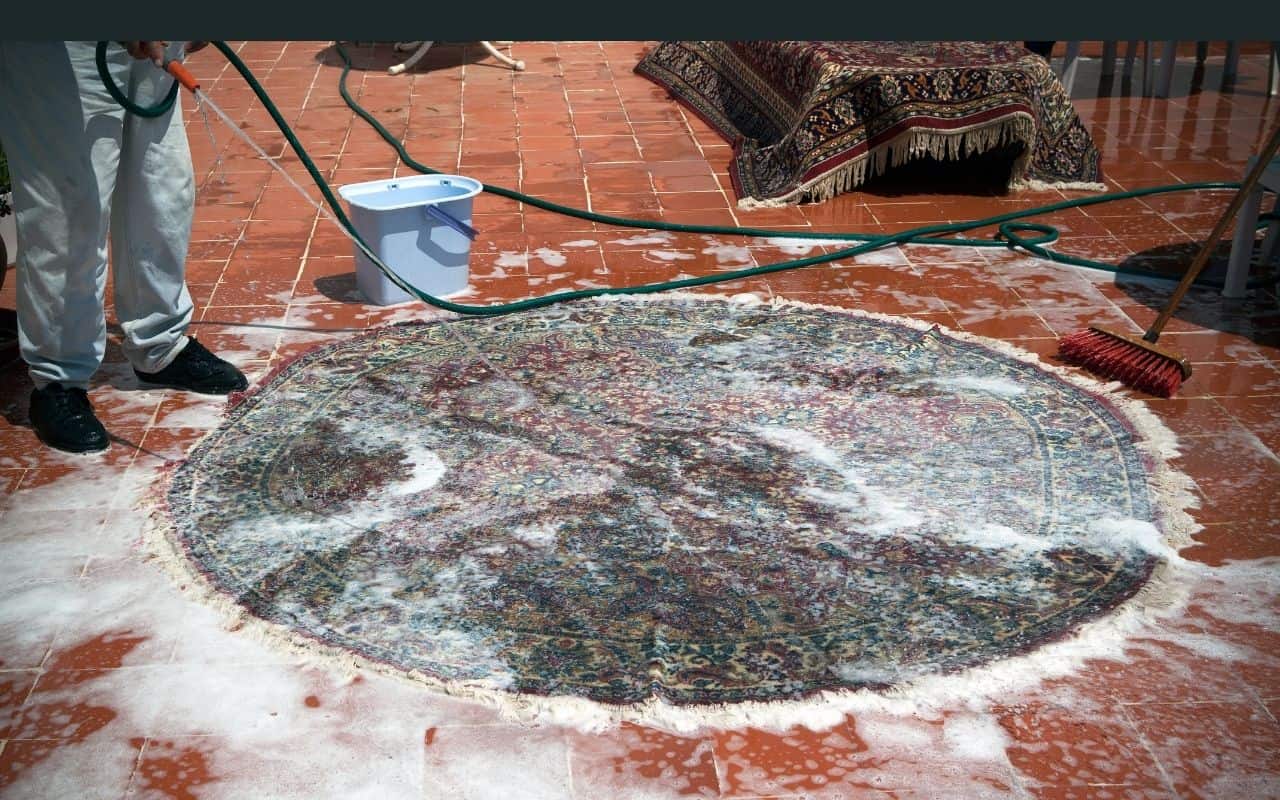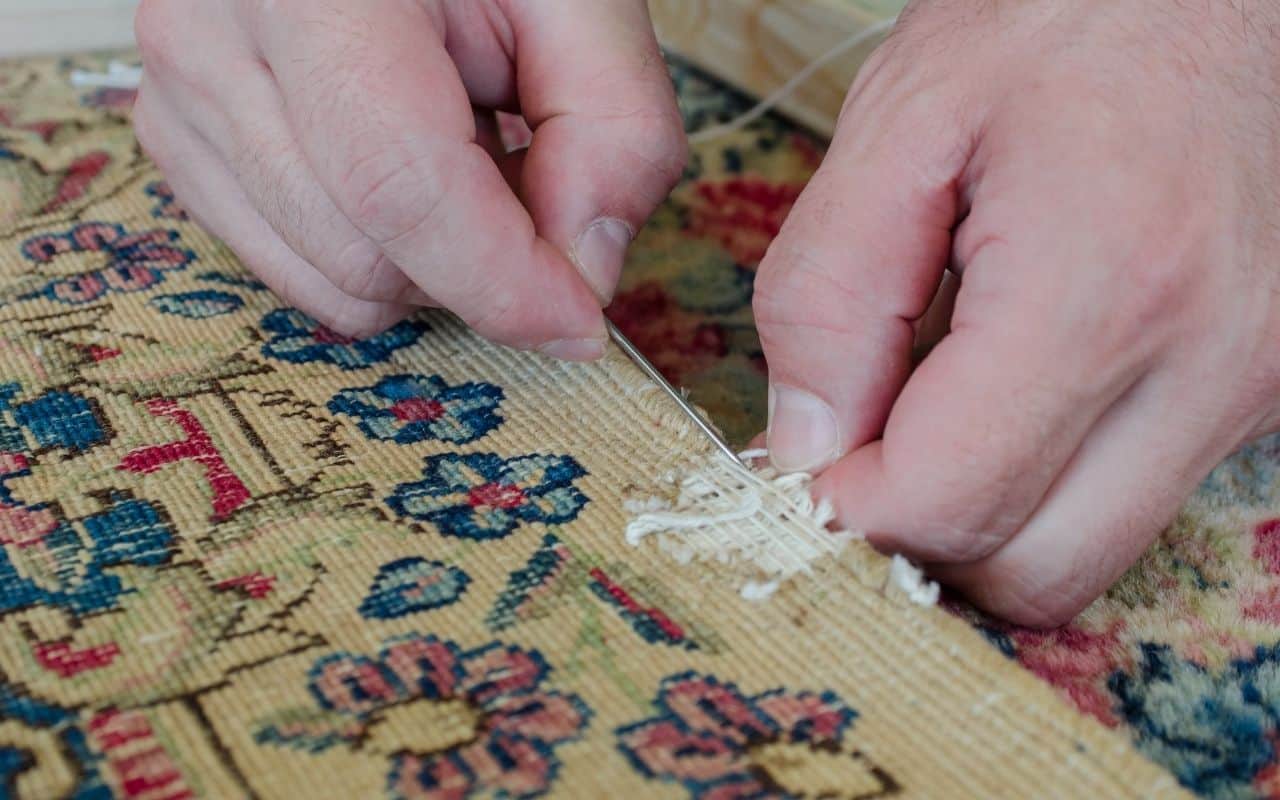Oriental rugs are an investment. In fact, many families pass down their Oriental rugs from generation to generation. However, for them to maintain both their beauty and value, they require proper care. As a result, it’s important to understand how to care for your rug. The delicate fibers and dyes used for these rugs are highly sensitive and require special attention. So if you’ve ever asked yourself: “How often should I clean my Oriental rug?”… here we look at how often your Oriental rug should be cleaned, with tips to help keep your rugs looking their best.
What Are Oriental Rugs Made Of?
This is an important place to begin because what your rug is made of impacts proper care. Authentic Oriental and Persian rugs are hand-knotted using different materials including wool, silk, and/or cotton. The design is woven into the foundation called a warp. Once the design is determined, the rug design is woven row by row using different colors, and each row is edged with a weft strand to hold the rows in place. These rugs are valuable due to the traditions and art involved in handcrafting them, which can take months for smaller rugs and years for larger area rugs. The most common fibers used to design the rug pile include:
Wool: Wool is more common for handmade Persian rugs, providing a soft yet durable mat. The best wool is called Kork or Kurk which is shorn from the under-belly of a lamb, and is then often combined with silk. The quality of wool is important not just for its softness but also for its ability to absorb and retain dye color.
Silk: Natural silk is used less often due to its cost. Created naturally from silkworm cocoons, it is very fine, yet strong. Because silk rugs are so delicate, they are often used for decorative purposes such as wall hangings, or in rooms with lower traffic to protect them from wear. As mentioned above, many rugs include both silk and wool to create depth and bring more attention to detailing in the rug. Silk rugs also must be cleaned by a professional to avoid damage to the delicate fibers.
Cotton: Cotton is used for rug warp but can also be used for white pile details. Specially treated cotton that is “mercerized” offers an “art-silk” look, providing a more affordable option than silk itself. When investing in silk rugs always confirm it is real silk, not mercerized cotton.
Each area has its own traditional designs using specific knotting techniques as well as materials and tools. These details help tell rug experts where and how a rug was made.
How To Care For Oriental Rugs
Caring for your Oriental rugs begins at home. Vacuuming them with a soft-bristled “beater” provides a gentle way to remove the debris caught in the pile. This is very important because debris rubs against the fibers which leads to issues with the integrity of the texture of each strand. Although wool is self-cleaning, allowing it to push dirt up and off its surface, over time you can still see the lovely colors fade and change if dirt is allowed to build up.
The vacuum should be set at its highest position so that the bristles only graze the delicate top of the rug. This allows vibration of the fibers which aids in loosening debris so the vacuum can remove it. Although your wool Oriental rug might look clean, keep in mind that its self-cleaning ability allows the rug to hold as much as a pound of dirt per square foot without showing any signs it is dirty. This is because the fibers are opaque so when light hits it, it doesn’t pass through it, and the dirt is less noticeable.
Just remember, the dirt is there even if you can’t see it, and therefore vacuuming at least once a week is recommended. For high traffic areas, or if you have pets, you can even vacuum a few times a week.
How Often Should I Clean My Oriental Rug?
Your rugs should be professionally cleaned every one to three years depending on traffic. As mentioned above, this is very important for rugs with silk fibers as they must be cleaned in a very specific manner. Wool rugs also need professional cleaning to remove anything your vacuum can’t reach. That said, when accidents happen, don’t take things into your own hands. Your delicate Oriental rug requires special care in these situations. Professional rug cleaners can quickly assess the stain and determine the safest and most effective way to remove it.
How Are Oriental Rugs Professionally Cleaned?
Our Oriental rug cleaning service takes special care so your rugs are never damaged. This includes an inspection of your rug to determine what it is made of and to confirm the colorfastness of the dye. Our Oriental rug cleaners then remove dry soil from the rug to ensure all the debris caught in the foundation and fibers are extracted. Your carpets come out looking like new because we fully immerse them in a mild conditioner and use delicate, light agitation to tackle the soiled areas.
We then rinse all that dirt away, as well as all the residues left behind from the conditioner. If your rug has odors, we treat them to freshen it up, and then we wring the rug out and extract all the moisture. Cleaning Oriental rugs also requires proper grooming of the nap before hang-drying the rug. We can also apply a professional fiber protector to improve the durability and stain resistance of your rug.
How Are Oriental Rugs Repaired?
If we notice your Oriental rug is damaged, we can provide a quote for repairs. Some of the most common issues include damaged fringe, as well as damage to the weft. We can reinforce the sides or ends, and even reweave holes. As soon as you notice damage to your Oriental rug, give us a call so we can repair it before it gets worse.
To schedule cleaning for your Oriental rug or for more information contact us today at 510-351-5230 or click here.






